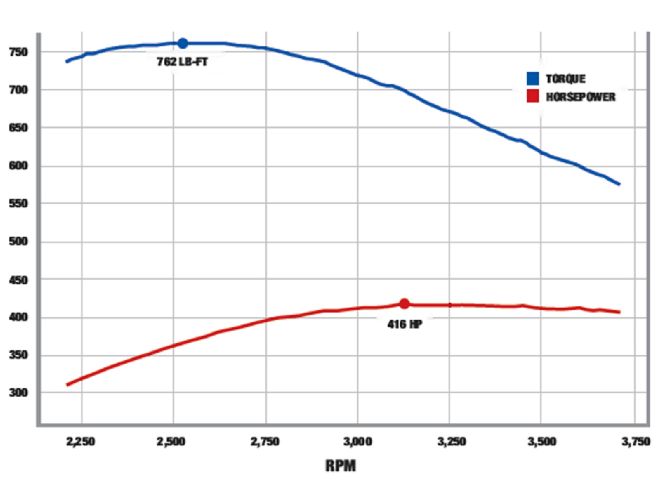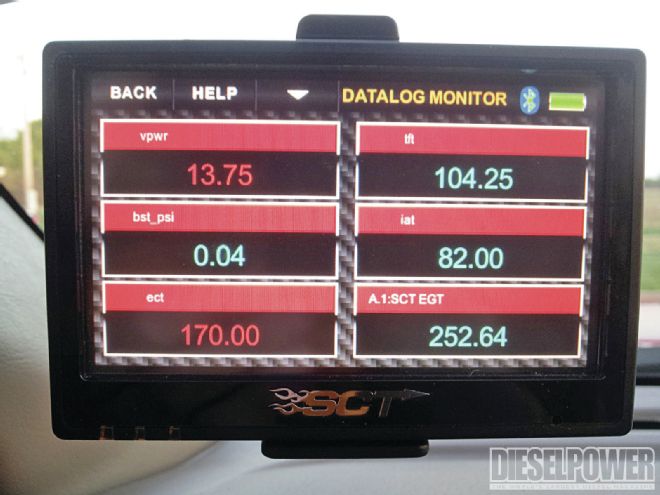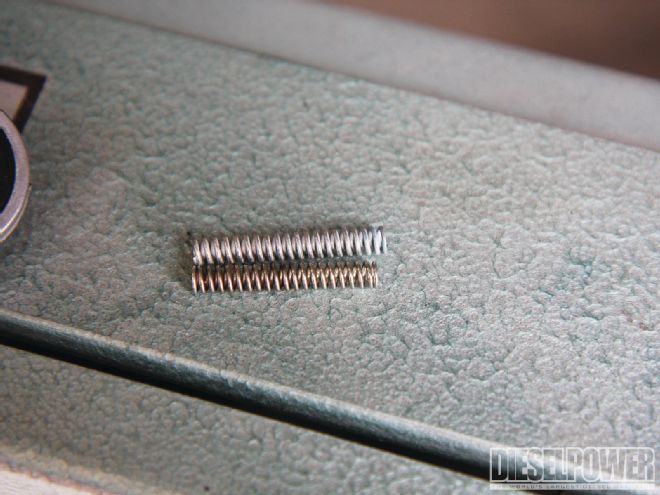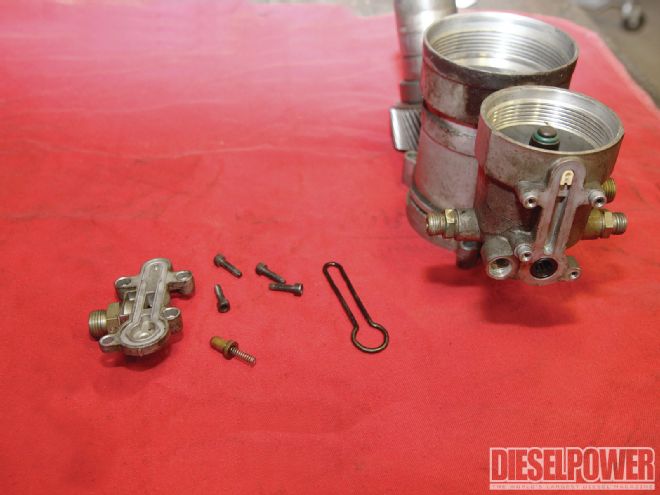For some of you, it’s been a long time coming, but this month we’re embarking on a journey deep inside the life of 6.0L Power Stroke ownership. From A to Z, we’ll be exposing what goes south on these engines and show you how to fix it and what you need to do to make it reliable. And of course, we’ll be adding horsepower. Our aim is to make you comfortable purchasing, upgrading, and keeping your ’03 to ’07 Super Duty for the long haul. We’ve long thought that once the 6.0L’s problem areas and factory shortcomings are addressed, it becomes one heck of an engine—and now we’re going to prove it. We begin this month in much the same way someone new to a 6.0L would, by adding some power in the form of an aftermarket tuner and confirming the fuel injection system is up to snuff.

| Have you ever felt this way with your 6.0L…outnumbered by the competition? Don’t worry, we’ve got your back. The next year of upgrades performed on this 6.0L Power Stroke are intended to help make you more comfortable owning an ’03 to ’07 Super Duty, show you how to make it reliable, and reveal ways to make it more powerful.
400 hp and Consistent Fuel Supply
A host of reputable aftermarket companies use SCT Performance’s software and flash devices to write custom tunes for 6.0Ls. For our custom tuning needs, we went with a shop that has arguably more R&D time in this engine than any other: Elite Diesel Engineering. Because we had a goal of cracking the 400hp mark on the dyno, we chose its hottest race file—the Insanity tune. Not only did we make more than 400 hp at the wheels, we nearly doubled the stock torque number making it to the ground. We also performed the popular blue-spring upgrade (the fuel pressure regulator spring) while on the dyno and collected some fuel supply data. Read on to see all the results and stay tuned for more upgrades, tips, and tricks in the coming months.

| Aside from a Brute Force air intake system from AEM and a Silverline 4-inch turbo-back exhaust, no other potential power-adders were on the truck when we got a hold of it.
F-250 Test Mule
Year/Make/Model: 2003 Ford F-250
Configuration: Extended cab, shortbed
Transmission: 5R110 TorqShift, five-speed automatic
Tires: 315/75R16 Pro Comp Extreme Mud Terrains
Wheels: 16x10 Pro Comp 1059 Series
Lift: 4-inch Pro Comp
Ring and Pinion: 3.73
Current Modifications
Air Intake: AEM
Exhaust: 4-inch Silverline turbo-back, dual exit
Fuel System: Blue fuel pressure regulator spring (blue-spring mod)
Tuning: SCT Touch Screen Extreme with Insanity file from Elite Diesel Engineering

| With just 63,000 miles on the clock, we figured this ’03 F-250 would be the perfect candidate for all our testing in the year ahead. And even though the owner has already scrapped the EGR system and added head studs, we’ll still be tackling an EGR delete and a head stud install in the coming months. For those of you without lifts (or who don’t like pulling engines), the head stud install will be performed without pulling the cab, and with the engine still in the truck.
Parts List
Part:
Vendor:
Details:
Price:
SCT Touch Screen Extreme
Elite Diesel Engineering
Four tunes, including dyno and street Insanity files, plus optional EGT probe
$1,130
Blue-spring upgrade
Local Ford dealer
(PN 3C3Z-9T517-AG)
$65
Total Price $1,195
- For tighter budgets, an SCT X3 tuner with custom tunes from Elite runs $500 (but gauges or a monitor will have to be purchased separately)
- If you already own an SCT flash device, custom tunes from Elite run $150
165hp Gain
While on the dyno, we data-logged a few runs. And just as we were expecting, the truck’s injection system checked out perfect. Injection control pressure (ICP) maintained and ICP sensor voltage checked out OK. The injection pressure regulator’s (IPR) duty cycle looked good, and the fuel injection control module’s (FICM) voltage read 48.5 volts with the key on, turning the engine over, and while running. With Elite’s Insanity tuning and the blue-spring upgrade, we have both a solid power-making recipe and healthy fuel supply. Below are some additional vitals we kept an eye on, along with our horsepower results.

| On the Randall’s Performance SuperFlow dyno, the truck distributed just 251 hp and 388 lb-ft to the rear wheels in stock form. Peak horsepower was made at 3,400 rpm, but due to the automatic transmission’s factory kick-down strategy (and inability for a gear to be manually selected), only a 20 percent load could be applied to the truck at lower rpm to keep it from downshifting (hence the low torque number).

| project Outcast Part 1 dyno Graph
Peak boost: 33 psi
Peak EGT: 1,200 degrees
Fuel Pressure (idle): 66 psi
Fuel Pressure (WOT): 60 psi
Stock Horsepower: 251 hp at 3,400 rpm
Tuned Horsepower: 416 hp at 3,150 rpm
*Dyno Jet correction factor
*30 percent load applied
*All runs were made in Fourth gear (1:1) with the torque converter locked
*Boost and EGT peak slightly higher on the street
The Importance of Fuel Pressure
According to most 6.0L experts, maintaining at least 45 psi of fuel supply pressure is key to keeping your injectors in tip-top shape. It’s very important to note that even if you see 45 psi on a gauge, that’s only what makes it to the regulator. By the time fuel reaches the last injector in each cylinder head, it could be as low as 35 psi. Because fuel acts as a cooler and a damper in the injector, a lack of supply pressure (which will have oxygen in it) can superheat the plunger. This can cause the plunger to stick, or beat up the other internals.

| project Outcast Part 1 fuel Pressure Gauge
To keep an eye on fuel pressure while on the dyno, we hooked a mechanical gauge up to the test port on the filter housing. With the stock fuel pressure regulator spring installed and the Insanity tune uploaded, we saw 47 psi at idle and 41 psi under wide-open throttle. With the blue spring installed, fuel supply jumped to 66 psi at idle and only fell to 60 psi under full throttle. Surprising to us, however, there was no gain in power with the addition of the blue spring—the truck still made 416 hp. To be sure, we’re much more comfortable knowing the added fuel pressure from the blue spring is healthier for our injectors.
 | project Outcast Part 1 dyno Graph
Peak boost: 33 psi
| project Outcast Part 1 dyno Graph
Peak boost: 33 psi

